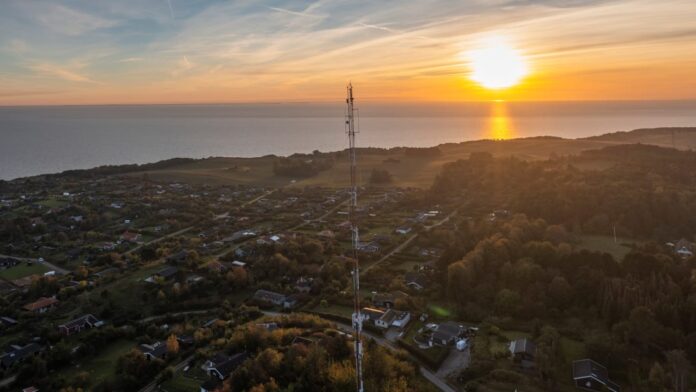Telenor Denmark announced plans to upgrade another 1,400 masts to 5G and begin the deployment of a Standalone 5G network.
In a release, Telenor said that its 1.6 million customers can already experience 5G in most parts of the country. The telco said that it had upgrade a total of almost 1,000 sites to 5G in 2021.
“We have come a long way in the last year, but we are looking forward to taking 5G even further out into the country. The goal is to give all our customers, no matter where they are, a great experience with a speed and capacity that matches their needs. We do not focus on great gigabit speeds in individual areas, but on delivering an even better networking experience via 5G to the broad section of Danes,” said Jesper Mølbak, network architect at Telenor.
In parallel with the 5G upgrade, Telenor is modernizing its 4G network, which is still used by many of its customers, so the telco is working to expand capacity and speed of 4G networks.
Telenor also confirmed that it is set to launch a 5G network based on the Standalone architecture in the country this year.
“When our network becomes 100% 5G, we can build our core function into the cloud, and it allows us to get closer to our customers. On 4G and non-standalone 5G, the traffic via our physical core network and the millisecond delay can make the difference between life or death if, for example, we are talking self-driving cars or remote-controlled operations,” Mølbak said.
“When the core network is in the cloud via local data centers, the response time becomes extremely low. Thus, we can start building private networks for customers with special needs. This is especially true for business and industry, which can greatly benefit from private 5G networks that can be completely sealed and cut off from the public network,” he added.
Telenor also confirmed it will shut down its 3G network, which operates using spectrum in the 900 MHz and 2.1 GHz bands, with the aim of making the best possible use of resources: “Data consumption is constantly increasing and the need for capacity in the network is massive. But with the amount of spectrum we got at the frequency auction in 2021, and with the plans we have for the use of the frequencies, we are guaranteed good capacity for the next ten years.”
Private networks
In related news, Telenor also announced it is establishing private networks as an independent business area of the company.
“Through our dialogue with customers in the business world, we know that there is an increased demand for guaranteed fast, stable and – most importantly – secure connections that can support the increasing use of smart technologies. That is why we also have very high expectations for private networks as a new growth engine with an ambitious goal of making it an important part of our business within just 3-5 years,” said Mikkel Kruse, business director at Telenor.
Telenor said that the new business unit will target manufacturers and heavy industrial companies, who with their special need to integrate robots and sensors in real time, will benefit from their own private wireless network. addition, the solution is also expected to be attractive for companies with office employees, where a private network adapted to the individual customer’s needs for security, uptime, service, etc. can act as a replacement or supplement to the traditional Wi-Fi.

